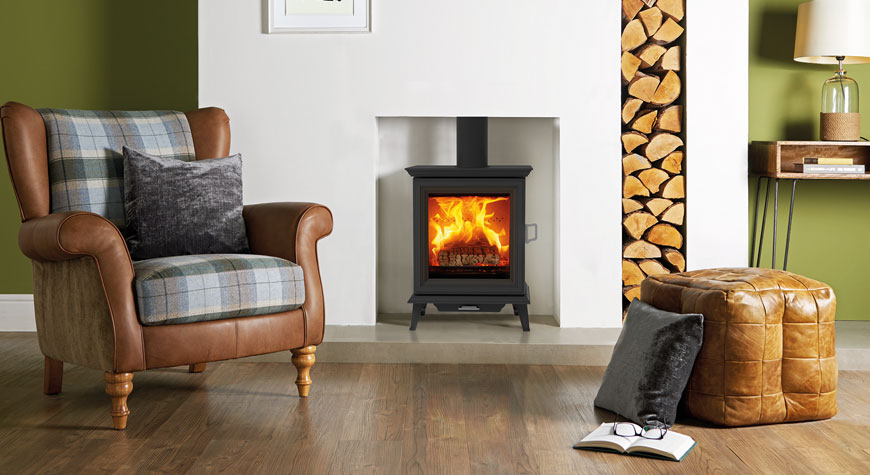A multi-fuel stove, which can burn wood, coal, peat, solid fuel and other types of fuel, can also be used to heat radiators and produce hot water. There is a general misconception multi-fuel stoves are more expensive but this is not always the case. It does depend upon the size, the heat output and the brand of stove but on the whole the difference is minimal to say the least. Indeed in some cases a wood-burner may actually be more expensive than a multi-fuel stove.
What can affect the cost of a multi-fuel stove?
There are many different aspects to take in the consideration regarding the cost of a multi-fuel stove which include:-
• The size of the viewing window (there is a strong trend towards widescreen viewing areas)
• Double sided multi-fuel stoves will be more expensive as you effectively get two stoves in one
• The more focus on the design of the multi-fuel stove, as opposed to the heat output, the greater the cost
• Brand – the more popular/designer multi-fuel stove brands will vary significantly in cost
This will give you an idea of the potential cost of a multi-fuel stove and which additions may add to the cost of your stove. To compare the value for money it is worth contrasting the cost of a multi-fuel stove against the same brand wood burner.
Different types of fuel for a multi-fuel stove
While it is obvious from the phrase multi-fuel stove that these machines can burn different types of fuel including wood and smokeless varieties but what else? Well, you can burn peat/turf briquettes and anthracite with a multi-fuel stove. It will obviously depend upon the cost of the fuel but there are potential cost savings to be made on your heating bills. Indeed, many multi-fuel stoves will also allow you to power radiators and hot water in your home. While these will obviously require larger machines but there is the potential for significant savings in the long term.
Design of multi-fuel stoves
It is interesting to learn that many people look at a multi-fuel stove as a type of “furniture” and will choose the design and colour depending upon the decor in their room. This is something which the stove manufacturers have recognised and have launched an array of different colours and different designs. Even though multi-fuel stoves are deemed by many as a “new product” and often associated with contemporary designs, this is not the case. Traditional stove designs are still prevalent in the multi-fuel stove sector and allow consumers to match the latest technology with an old world look.
Maintaining a multi-fuel stove
As you could potentially be burning a number of different fuels, there is a slightly higher amount of maintenance required for a multi-fuel burner. All multi-fuel stoves will also have a riddling grate although they are not required for wood burning stoves. They will also include an ash pan which again is specific to a multi-fuel stove. So, while there is slightly more to do with regards to maintenance it is minimal. It is simply a matter of cleaning the riddling grate and combustion chamber to create the most efficient environment in which to use your machine.
You may find that some people will use a different type of fuel with their multi-fuel stove in the summertime than in the wintertime. Therefore this added variation in potential fuel type can be very useful and not only cost-effective but highly efficient.
Summary
A multifuel stove is often the preference of many new to the stove market. Some people prefer the ability to burn different types of fuel, including solid fuel, while others prefer to stay with traditional wood. One of the tell-tale signs of a multifuel stove is the existence of a riddling grate and ash pan which are not required with a wood-burning variation. The comparative cost between a multifuel stove and wood-burning variation will vary so there is no one size fits all for this comparison.

